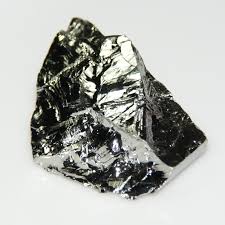Germanium:

India is engaging with the Chinese government to navigate export restrictions on germanium, a critical mineral that is used in manufacturing of semiconductors, fiber optic cables and solar panels.
- It is a chemical element between silicon and tin in Group 14 (IVa) of the periodic table.
- It has the chemical symbol Ge and the atomic number 32.
- It is a silvery-gray metalloid, intermediate in properties between the metals and the nonmetals.
- It has a diamondlike crystalline structure, and it is similar in chemical and physical properties to silicon.
- Germanium is stable in air and water and is unaffected by alkalis and acids, except nitric acid.
- Although germanium was not discovered until 1886 by Clemens Winkler, a German chemist, its existence, properties, and position in the periodic system had been predicted in 1871 by the Russian chemist Dmitry Ivanovich Mendeleyev, who called the hypothetical element ekasilicon.
- Germanium did not become economically significant until after 1945, when its properties as a semiconductor were recognized as being of value in electronics.
- It remains of primary importance in the manufacture of transistors and of components for devices such as rectifiers and photocells.
- It is widely distributed in nature but is too reactive to occur free.
- Germanium ores are rare. They are found in small quantities as the minerals germanite and argyrodite.
- Today, germanium is extracted as a by-product of zinc production and from coal fly ash.
- It is estimated that 75% of worldwide production of germanium is sourced from zinc ores, mainly the zinc sulfide mineral sphalerite, and 25% from coal.
- The major worldwide producer of germanium is China, responsible for around 60% of total production.
- The remaining production of germanium comes from Canada, Finland, Russia, and the United States.




